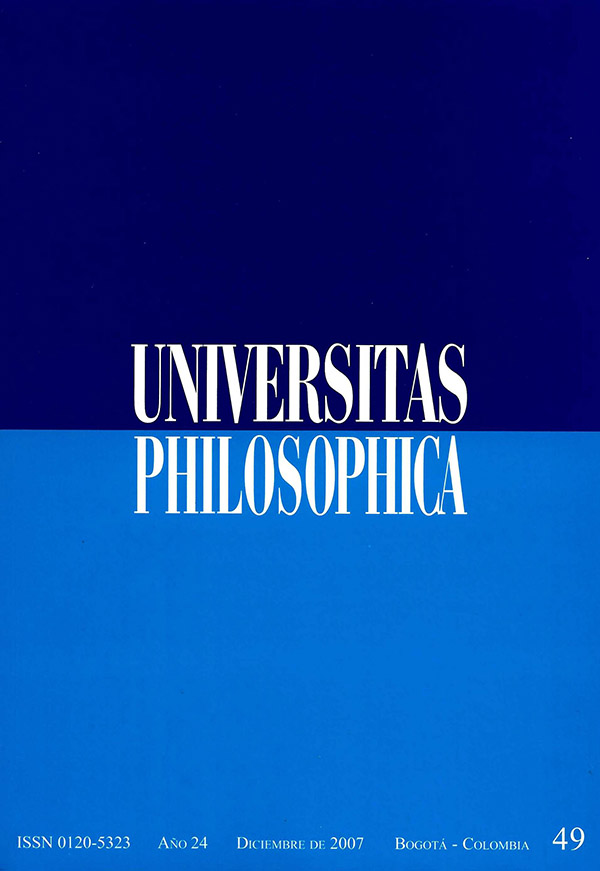Abstract
This essay explores the meaning and scope of the extended debate between Heidegger and Kant, based on his different phenomenological exercises on Kant’s theoretic and practical thought, in order to concretely develop the position for the quest on the meaning of being within the horizon of time. Heidegger’s effort finds his proper way beyond the neokantian criticism of those years and Husserl’s phenomenology, but faithful to his investigative principle of going to the things themselves. The author highlights Heidegger’s methodaccording to which any phenomenological interpretation is destruction, confrontation and radicalization in itself.This journal is registered under a Creative Commons Attribution 4.0 International Public License. Thus, this work may be reproduced, distributed, and publicly shared in digital format, as long as the names of the authors and Pontificia Universidad Javeriana are acknowledged. Others are allowed to quote, adapt, transform, auto-archive, republish, and create based on this material, for any purpose (even commercial ones), provided the authorship is duly acknowledged, a link to the original work is provided, and it is specified if changes have been made. Pontificia Universidad Javeriana does not hold the rights of published works and the authors are solely responsible for the contents of their works; they keep the moral, intellectual, privacy, and publicity rights.
Approving the intervention of the work (review, copy-editing, translation, layout) and the following outreach, are granted through an use license and not through an assignment of rights. This means the journal and Pontificia Universidad Javeriana cannot be held responsible for any ethical malpractice by the authors. As a consequence of the protection granted by the use license, the journal is not required to publish recantations or modify information already published, unless the errata stems from the editorial management process. Publishing contents in this journal does not generate royalties for contributors.


